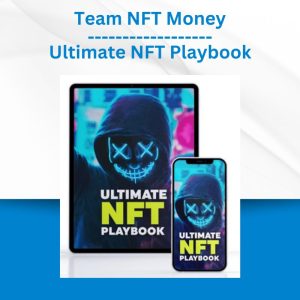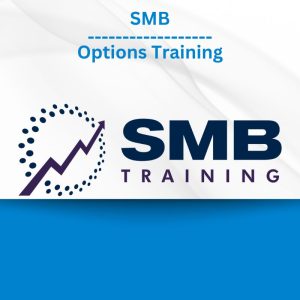*** Proof of Product ***
Exploring the Essential Features of “Classic Rock Guitar Unleashed”
Wanna Rock?
Classic Rock Guitar Unleashed is designed to be the fastest and most complete, step-by-step way to learn all of the skills, chords, licks, rhythms, riffs, and solo ideas you would need to play thousands of your classic rock favorites.
And while it’s impossible to cover every single musical idea out there, I think you’ll see that the depth of Classic Rock Guitar Unleashed is such that you’ll be exposed in some way to darn near anything you would ever come across when you want to learn any classic rock songs.
If you are already familiar with some of my other courses like my popular Blues Guitar Unleashed course, then you’ll already be comfortable with my style of teaching – and that, of course, is all over Classic Rock Guitar Unleashed.
But what’s different (and I believe better in many ways) is how I’ve learned to handle some of the technical elements to get the notation on screen better and provide a better experience for you getting the music from video and notation to sound and getting it into your fingers.
Now learning to play Classic Rock Guitar is simply faster, and better than ever before.
Classic Rock Rhythm Guitar
The 14 Classic Rock Rhythm lessons focus on all the elements of rhythm guitar… from the bombastic sounds of AC/DC style open power chords to the subtle nuances of Fleetwood Mac style fingerpicking.
Classic Rock Lead Guitar
You’ll learn all the lead techniques like hammer-ons, pull-offs, slides, bends, and pinch harmonics… plus you’ll learn the major and minor pentatonic AND blues scales inside and out.
8 Full Length Solos
Not only will you learn the scales and a boatload of licks, but you’ll also get 8 complete solos in the styles of guitar players like Angus Young, Jimmy Page, Jimi Hendrix, David Gilmour, George Harrison, and many more.
Let’s Break It Down…
Rhythm Lessons 1-5
In the rhythm section, the first 5 lessons are all about rhythm – how to understand it, how to count it, and how to play it.
There are dozens of examples covering all the basics like quarter notes, 1/8th notes, and triplets, all the way up to more advanced 1/16th note counting and 12/8 time in addition to common time.
You’ll learn straight and swing feels, and you’ll play many examples that will sound an awful lot like popular songs you know by heart.
Rhythm Lessons 6 and 7
In Lesson 6 we’ll cover power chords in all their glory, and add to that in lesson 7 with palm muting and a bunch of rock riffs on the heavier side.
Rhythm Lesson 8
Lesson 8 is all open position power chords and a bunch of killer AC/DC and Zeppelin style riffs.
Rhythm Lesson 9
Now because Classic Rock owes it’s soul to the blues, we spend Lesson 9 talking about that blues influence and we go through a bunch of blues based rock riffs. Real world examples of this are too many to count, but I think you’ll quickly recognize how these work when you need them.
Rhythm Lessons 10 and 11
In Lesson 10 I’ll show you my foolproof method for learning the names of every single note on your guitar in just a few minutes a day. And then we’ll put that to use in Lesson 11 where we’ll cover all the moveable chord shapes.
You’ll see pretty quickly that with just a few shapes and knowing the names of the notes on your guitar you’ll be able to play pretty much any chord you’ll ever need.
Rhythm Lesson 12
Lesson 12 is one of my personal favorites and it ‘s where we get into partial chords, and other embellishments like the Rolling Stones Move and suspended chords as used by everyone from Tom Petty to Eddie Van Halen.
Rhythm Lessons 13 and 14
In lessons 13 and 14 we’ll handle the softer side of classic rock with lessons in arpeggios and fingerstyle riffs. These are the kind of ideas used in songs like “Dust In The Wind,” “Simple Man,” “Sweet Home Alabama,” “Behind Blue Eyes,” “Landslide,” and dozens more.
Lead Lessons 1-4
We’ll first cover all the fundamentals of soloing including bends, slides, hammer-ons, pull-offs, and the minor pentatonic scale in both a “box 1” way and with “extensions” to add a little bit more fretboard.
We’ll also talk about some important ways to practice your scales so that you’ll really know them when you need them instead of guessing. You’ll learn about “melodic sequences” and the value of applying the rhythms you learned in the rhythm section to your lead playing.
Lead Lesson 5, Solo 1
This is a Jimmy Page style solo over the “Stairway” changes. This 1 set of chord changes (a “chord progression”) forms the backdrop for hundreds (if not thousands) of classic rock songs so learning how it works is essential.
Of course, I’ll walk you through it note for note and break it up into 5 individual licks that you can use in your own solos whenever you want.
Lead Lesson 6
In lesson 6 we’ll talk about “the blue note” and how to turn your minor pentatonic scale into a minor blues scale, including the extensions.
Lead Lesson 7
Here is where we’ll talk about moving the minor pentatonic and blues scales to any key, anywhere on the guitar fretboard. You’ll see quickly just how easy it is to change keys at the drop of a hat.
Lead Lesson 8, Solo 2
Solo 2 is in the style of Angus Young over a “Back In Black” style chord progression (which is, again, a very common chord progression used in many songs.)
The focus of this solo is adding the bluesier elements of classic and hard rock to your solos, and soloing in a new key.
Lead Lesson 9
In lesson 9 we’ll cover the rest of boxes 2 and 5, as well as 3 and 4 to connect the entire fretboard for soloing. You’ll see how the minor pentatonic and minor blues “boxes” connect to create a roadmap of scale tones across the whole guitar for you.
We’ll also look at another “root-centric” layout that many classic rock guitar players, as well as blues-rock players, use as much as 90% of the time.
Lead Lesson 10, Solo 3
Solo 3 is in the style of David Gilmour as he might approach a tune like “Comfortably Numb.” The chord progression is actually similar to Solo 1 (see, I told you it comes up a lot) but at this slow tempo it gives us a chance to cover how to count and play sextuplets.
You’ve likely never heard of sextuplets, but I can promise that you’ll love their sound. If you’ve ever wanted to play faster blues/rock likes like these, this is how it’s done (just ask Joe Bonamassa, Billy Gibbons, or Richie Blackmore.)
Lead Lesson 11
Lesson 11 is everything you wanted to know about harmonics and more!
From natural harmonics to 2-hand tapped harmonics to “squeals” that will make Billy Gibbons and Zakk Wylde jealous.
Lead Lesson 12, Solo 4
Speaking of Billy Gibbons, it wouldn’t be right to show you how to do those pinch harmonics and not give you a chance to use them!
So solo 4 is in the style of the good Reverend from Texas and I’m pretty sure you’ll recognize what song it would work over.
Lead Lesson 13, Solo 5
For solo 5, I like to say that it’s a melting pot of influences. It’s similar to what Mike McCready would play back in the early 1990’s, but the licks come right out of the early to mid 1970s.
There are licks stolen from Jimi Hendrix, Ace Frehley, and Robbie Krieger (among others) masterfully put together into a really fantastic solo (one of Guitar Player magazine’s best of all time as I recall.)
Lead Lesson 14
In Lesson 14 I’ll show you all you need to know about the major pentatonic and major blues scales, and how to take what you already know to make it work for you without learning any new patterns.
But in addition to that I’ll cover one of my favorite patterns, the “3+2” pattern that you’ll see comes up in a lot in solos that use the major pentatonic or major blues sounds (The Beatles, Lynyrd Skynyrd, the Allman Brothers, and the list goes on and on.)
Lead Lesson 15, Solo 6
I’ve always been somewhat mesmerized by George Harrison’s solo in “Let It Be” by the Beatles, and it turns out to be the perfect setting for really demonstrating just how great the major pentatonic sound can be.
Plus, I added in a few other fun little things made famous by that Jimi Hendrix guy that you might recognize.
Lead Lessons 16 and 17, Solos 7 and 8
The last 2 solos really showcase the sound of combining the major and minor pentatonic and blues sounds. From the Skynyrd-esque quality of solo 7 to the more AC/DC type sound of solo 8, I’ll give you a dozen different ideas on how these 2 sounds combine to form the core essence of the classic rock soloing sound.
By the time we’re done you’ll really have an understanding of how the 2 sounds work together, when you can change between them, and why. Plus you’ll have a bunch of great new licks.
Note By Note, Step By Step
For every example and every lick of every solo I’ll break it down for you note by note using my new on-screen tab where all you have to do is follow the red dot through the music.
Not only does this keep you from having to go back and look through the manual (though, you certainly can if you prefer,) but it allows you to see where I am and to be able to confirm for yourself that you’re doing it right.
It’ll amaze how much “musical knowledge” you’ll pick up through the process of following along with me, instead of digging around for yourself.
What I loved is how you’ve combined teaching rhythm and lead for a specific style, along with sight reading
for both, with onscreen technology that really WILL teach you sight reading.
Guitar instruction is so DISCONNECTED from actually PLAYING MUSIC.
You learn techniques in isolation. BORING…
You learn rhythm in isolation. BORING…
You learn sight reading in isolation. BORING…
And the most boring of them all … THEORY is ISLOATION…
Griff teaches you classic rock STYLES very very close to songs you love, and as you learn how to sound like the music you love, you become a better rhythm player, lead player, and learn to sight read.
ANYWAY, that’s why I love it.
Kelvin
How Big Is It And What’s Included?
Classic Rock Guitar Unleashed is jam packed with over 12 hours of video content, 181 pages of complete note-for-note transcriptions in both standard and TAB notation, and over 180 jam tracks so you can be playing along with a real band nearly every step of the way.
All of the video and audio files are accessible through your own private member area, and they will not go away, you can download them or watch them online from your computer or tablet any time you want, day or night.
And if you prefer, there are options for getting a printed copy of the manual, and you can even get the whole course on DVD if you still like to hear it go “thump” on your porch when it arrives.
You Have Nothing To Lose With My Personal Guarantee
As with every course I do you have my complete 100% satisfaction guarantee for a full 90 days. Try the course out, play with it, put it through it’s paces – and if for any reason you aren’t totally thrilled with it, just let me know and I’ll refund your purchase price quickly and without any hassle at all…
And you don’t even have to send the course back.
How Much Would That Be Worth?
At this point I can tell you all about how if you learned this from me privately it would cost you over $5200, and how it has all the advantages of you not having to drive to your lessons and you can rewind me and replay sections as much as you want…
But you probably know that. And you probably know the value of the instruction that I provide.
More important than all of that is the level of commitment you should expect from me after you start the course.
Around here we believe that our relationship really begins once you take the plunge and get your copy of Classic Rock Guitar Unleashed. You’ll have full access to the member forum where you can get any and all of your questions answered any time, day or night.
And as most of the folks there will tell you, it’s not hard to reach me through the member forum and I’m on there darn near every day.
So if I told you this was a $297 course, that would make perfect sense and it would be worth every penny (and 10 times more besides…)
But for you, today, it’s a full $100 less than that at just $197. That’s 14 complete rhythm lessons, 17 lead lessons including 8 full solos, over 180 backing tracks to play along with, and the 180+ page manual… all for just $197.
You can also add on a printed manual if you don’t want to download it and print it for yourself, and if you prefer it on DVD to get that “thump” when it lands on your doorstep… we can do that too.
Please see the full list of alternative group-buy courses available here: https://lunacourse.com/shop/









